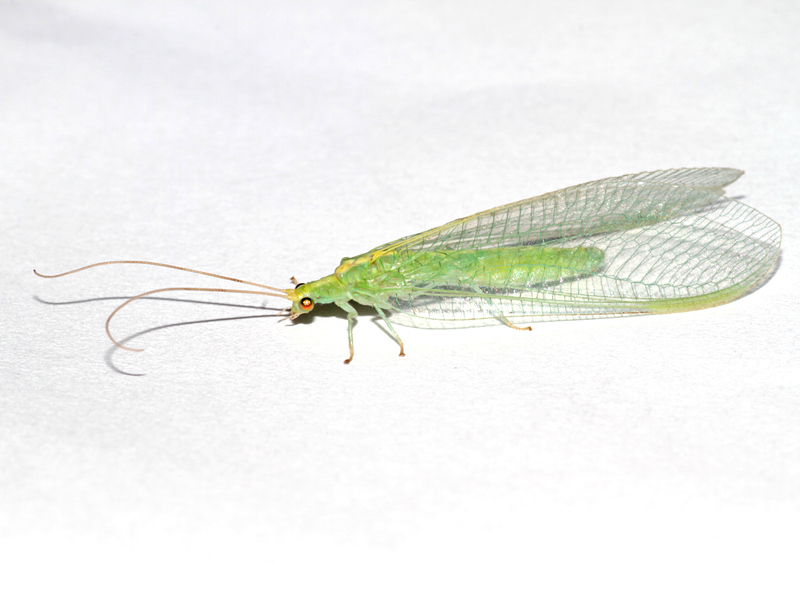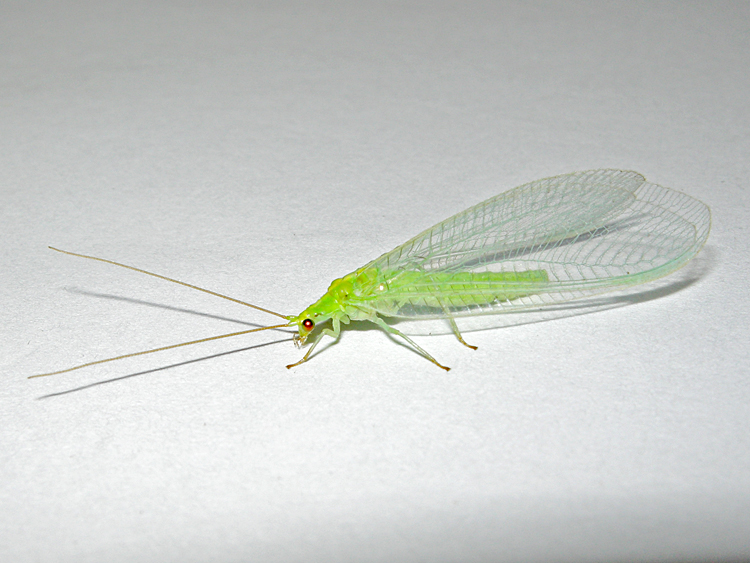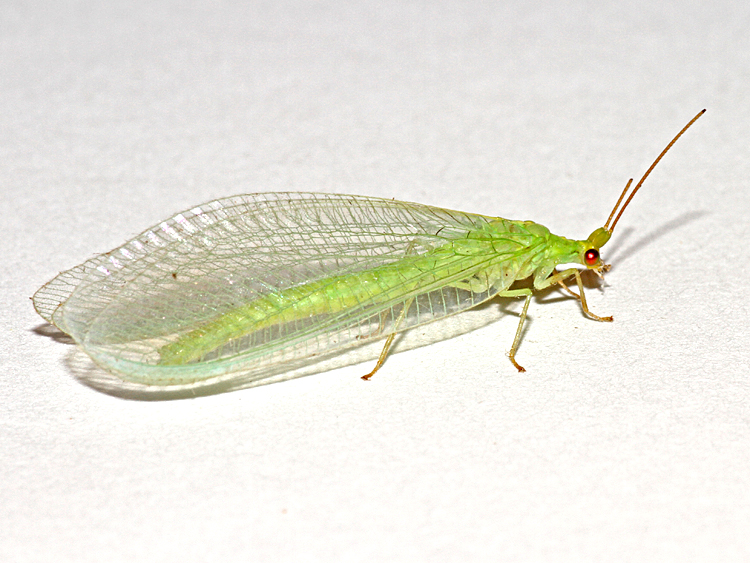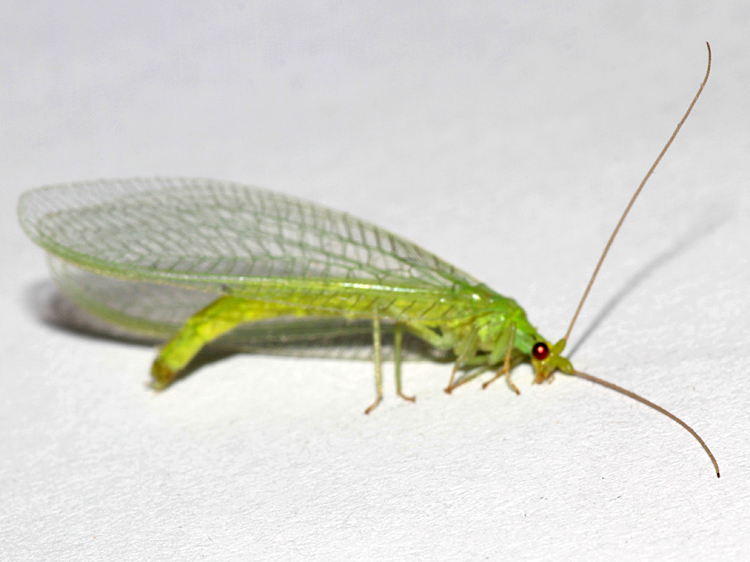Nineta vittata
A large species of green lacewing, flying between late May and late August.
The large size of this lacewing is sufficient to eliminate most of the commoner species apart from Nineta flava, but there are other large species that need to be eliminated, and apparently small examples occur sometimes too. The basal segment of the antennae is larger and longer than on other similar species.
If using Plant (1997) please note that the Nineta section of the key has been extensively revised to accommodate additional species, although if you have a vittata you should still be able to identify this correctly using Plant (1997). For other Nineta species, refer to Entomologist’s Rec. J. Var. 126 (Canard, Wilton & Plant, 2014) for details (this also corrects an error in Harvey and Plant, 2007).
Here the large size of this species is shown by seeing the vittata side-by-side with a Chrysoperla carnea.
, North Elmham, 21-Aug-20 (A) (2) - Copy.JPG)
, North Elmham, 21-Aug-20 (A) (3) - Copy.JPG)
Nineta vittata (with male Chrysoperla carnea to the right in the second photo), North Elmham (Norfolk, UK), 21st August 2020
The original key in Plant (1997) requires the first antennal segment of vittata to be "very clearly at least twice as long as wide" and for the alternative, "not so elongated. It may be more or less square... or slightly longer than wide". This was a little exagerated, at least for some individuals, but the revised version in Ent Rec is a bit better: "twice as long as wide" for vittata vs. "only slightly longer than wide or more or less square" for the others. I would go further and say "at least nearly twice as long as wide". The exact proportions depend on what face of the segment you are looking at, but as the measurements below show, this one wasn't quite twice as long as wide from any angle. But neither was it "only slightly longer than wide."
Determining whether the leading edge of the wing is concave or not isn't necessarily as easy as it sounds - the way the edge curves at either end and straightens up for the middle portion creates an illusion that can suggest a slight concavity which isn't real. Holding a straight edge next to the wing (or drawing a straight line next to it in a photo - provided the photo is of a flattened wing - as shown below) may help here.
, Sporle Wood, 27-Jul-23 (A) (2).jpg)
, Sporle Wood, 27-Jul-23 (A) (1).jpg)
, Sporle Wood, 27-Jul-23 (A) (3).jpg)
, Sporle Wood, 27-Jul-23 (A) (4).jpg)
, Sporle Wood, 27-Jul-23 (A) (5).jpg)
, Sporle Wood, 27-Jul-23 (A) (7).jpg)
, Sporle Wood, 27-Jul-23 (A) (8).jpg)
, Sporle Wood, 27-Jul-23 (A) (9).jpg)
, Sporle Wood, 27-Jul-23 (A) (10).jpg)
, Sporle Wood, 27-Jul-23 (A) (11).jpg)
, Sporle Wood, 27-Jul-23 (A) (13).jpg)
female Nineta vittata showing wings, close-up of forewing (showing line to check concavity and ruler), different views of the antennal scape with measurements and abdomen from side, Sporle Wood (Norfolk, UK), 27th July 2023

Nineta vittata, North Elmham (Norfolk, UK), 21st August 2017
 (1).jpg)
Nineta vittata, North Elmham (Norfolk, UK), 21st August 2020

Nineta vittata, North Elmham (Norfolk, UK), 23rd July 2019
 (2).JPG)
Nineta vittata, North Elmham (Norfolk, UK), 30th June 2016
 (2).JPG)
Nineta vittata, North Elmham (Norfolk, UK), 29th July 2018

Nineta vittata, North Elmham (Norfolk, UK), 7th August 2016

Nineta vittata, North Elmham (Norfolk, UK), 7th June 2017
